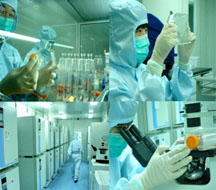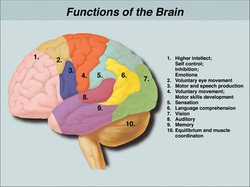As we have introduced before, diabetes is a metabolic diseases in which the person has high blood glucose (blood sugar), either because insulin production is inadequate, or because the body’s cells do not respond properly to insulin. Well, in this passage we will focus on the medical treatments for diabetes.
0 Comments
 Stem cell transplants, some sort of stem cell treatment, are also referred to as bone marrow transplants. They are used to treat both cancerous and noncancerous diseases. This passage specializes in some basic knowledge of stem cell transplants as a treatment for many diseases.
The treatment of stem cell transplants Stem cell transplants are done when the patient's bone marrow can no longer make healthy stem cells. Stem cells are the building blocks for white blood cells, red blood cells and platelets. The functions of these three cells are vital for sustaining life. The stem cells used in stem cell transplants can either from the patient's body or donor sources. Stem cells from donors can be extracted both from the bone marrow and from umbilical cord blood. During the treatment of stem cell transplants, a catheter known as a central line is placed in the chest; healthy transplanted stem cells are injected through the central line and into the body to treat the disease. This kind of stem cell treatment is proved to be effective. Diseases treated by stem cell transplants both cancerous and noncancerous diseases are treated with stem cell transplants. Aplastic anemia, a non-cancerous disease, occurs when the stem cells in the patient's bone marrow don't function well enough to make an acceptable amount of new blood cells needed. Scientists use stem cell treatment for this disease by injecting healthy stem cells into the patients. When the transplanted stem cells are accepted by the patient's body, the non-functioning stem cells in the blood marrow are destroyed and replaced by healthy transplanted stem cells. In the case of leukemia, a type of cancer disease, stem cell transplant can both enhance the amount of healthy blood cells the patient¡'s body can produce and kill remaining cancer cells in the bone marrow. All show that stem cell transplants are competent means of stem cell treatment. Successful stem cell transplants offer an extension of life to patients who experience a remission of their disease. Patients who undergo a stem cell transplant using stem cells from their own bodies often recover sooner than patients who use stem cells from the donors as patients using donor stem cells may face problems of disease fighting capability rejection. On the whole, stem cell transplants are competent therapy for many patients.单击此处进行编辑.  There are many different types of treatments readily available for patients of Traumatic Brain Injury (TBI) and they can be separated into two parts: treatments for acute stage and treatments for chronic stage. Traumatic Brain Injury Rehabilitation is treatment for chronic stage.
Traumatic brain injury rehabilitation aims to improve independent function at home and in society and to help adapt to disabilities and has demonstrated its general effectiveness, when conducted by a team of health individuals who concentrate on head trauma. Unlike other cells in the body, brain cells can’t regenerate by themselves and once they are destroyed. Owing to traumatic brain injury, many functions would be affected and rehabilitation can help recover the function and decrease the damage. In most cases traumatic brain injury rehabilitation should be taken immediately if the condition is steady. As traumatic brain injury would lead to many medical dysfunctions, like movement, memory and speech and so on. The rehabilitation of TBI involves in many parts. The Physiatrist is the team leader in the rehabilitation program. The physiatrist is a physician specializing in physical medicine and rehabilitation. Physiatrists treat a wide range of problems, including the changes after brain injury. The physiatrist will assess and prescribe the therapy and direct the team. The Neuropsychologist is a key member of the rehabilitation team. The neuropsychologist will determine the patient¡¯s changes in thinking and behavior. It is important for patients’ daily actions. Traumatic brain injury rehabilitation has three types: inpatient rehabilitation, outpatient rehabilitation and community rehabilitation. Family members play an important role in patients’ rehabilitation. They provide both long-term support and a major contribution to the rehabilitation process. Families can provide valuable insights into the patient’s character, choices and ambitions, along with important information on the presentation of difficulties in the home setting. Traumatic brain injury rehabilitation is a long period for patients and their family, but it is necessary for their health.此处进行编辑. |
 RSS Feed
RSS Feed